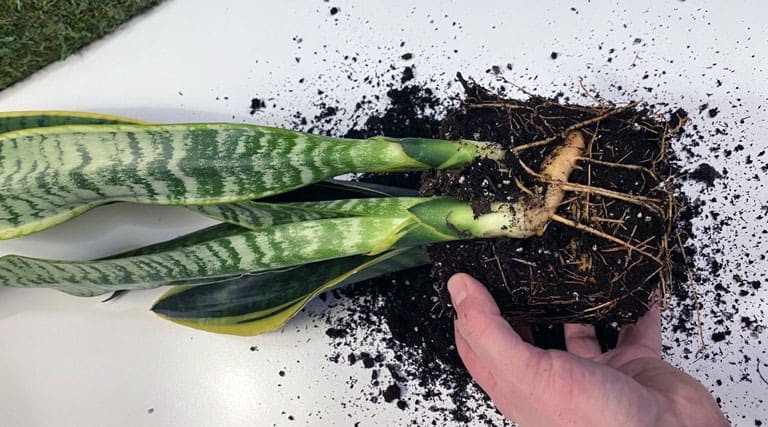If you’re a plant lover, chances are you already own a snake plant (Dracaena trifasciata, formerly Sansevieria). Its tall, elegant, sword-shaped leaves and hardy nature make it one of the most popular houseplants in the world. But did you know you can easily multiply your snake plant collection at home without buying new ones?
In this comprehensive guide, we’ll show you exactly how to propagate snake plants using simple, effective methods. Whether you’re a beginner or an experienced plant parent, you’ll find these techniques approachable, rewarding, and fun.
Why Propagate Snake Plants?

There’s more than one reason why propagation is a fantastic idea:
- Grow your collection affordably
- Gift propagated plants to friends and family
- Revive overgrown or damaged plants
- Experiment with plant care and gardening skills
- Create striking, easy-care arrangements for home or office décor
Since snake plants are incredibly tough and adaptable, propagation success rates are high — making them ideal candidates for anyone new to plant propagation.
4 Simple Methods to Propagate Snake Plants
Snake plants can be multiplied in several ways, and each method has its advantages. Here’s an easy breakdown of the four best techniques:
- Leaf cuttings in water
- Leaf cuttings in soil
- Division of the plant
- Rhizome propagation
Let’s explore each of these in detail.
Method 1: Propagating Snake Plants in Water

This is the easiest and most popular method — and it’s satisfying to watch roots develop before your eyes.
What You’ll Need:
- A sharp, sterilized pair of scissors or shears
- Healthy snake plant leaves
- A glass jar or clear vase
- Clean, filtered water
Step-by-Step:
- Select a healthy leaf: Choose a tall, firm, green leaf from your snake plant.
- Cut the leaf: Use sterilized scissors to cut the leaf close to the soil line.
- Divide into sections (optional): You can cut the leaf into 4–5 inch segments. Always mark the bottom end to know which side goes into water.
- Place in water: Submerge the cut end in a glass of clean water, ensuring only the bottom inch is underwater.
- Provide indirect sunlight: Position the glass in a bright spot but away from direct sun.
- Change water regularly: Replace the water every 3–5 days to prevent bacterial buildup.
- Wait for roots: You should see roots developing within 3–6 weeks, followed by tiny pups.
- Transfer to soil: Once roots are 1–2 inches long, plant the cuttings in a well-draining soil mix.
Tip: While water propagation is fun to watch, some gardeners prefer soil propagation as it avoids transplant shock when moving from water to soil.
Method 2: Propagating Snake Plants in Soil
For those who prefer to skip the water rooting phase, propagating directly in soil is an efficient option.
What You’ll Need:
- Healthy snake plant leaves
- Potting soil with good drainage
- Small pots with drainage holes
- Sharp scissors or shears
Step-by-Step:
- Cut a healthy leaf: Choose a mature, disease-free leaf and cut near the base.
- Divide into sections (optional): As with water propagation, cut into 4–5 inch sections, marking the bottom ends.
- Allow cuts to dry: Let the leaf pieces dry and callous over for 1–2 days to prevent rot.
- Plant in soil: Insert the cut end about 1–2 inches deep into moist, well-draining soil.
- Water sparingly: Keep the soil slightly moist until roots develop, then reduce watering frequency.
- Provide bright, indirect light: Avoid placing cuttings in direct sunlight.
- Watch for new growth: Roots should form within 4–6 weeks, with new leaves following in a couple of months.
Method 3: Propagating by Division

If your snake plant has outgrown its pot or produced several offshoots, dividing it is the quickest way to create new plants.
What You’ll Need:
- A mature snake plant
- Clean, sharp knife or garden shears
- New pots and fresh potting mix
Step-by-Step:
- Remove the plant from the pot: Turn the pot on its side and gently ease the plant out.
- Loosen the root ball: Shake off extra soil to expose the roots and rhizomes.
- Separate natural clumps: Identify clusters of leaves attached to a section of roots.
- Cut divisions cleanly: Use a sharp knife to separate clumps, ensuring each has its own roots.
- Replant divisions: Pot each division into fresh soil.
- Water lightly: Avoid overwatering newly divided plants.
- Place in a bright location: Provide indirect light for recovery.
Bonus: Dividing a snake plant not only multiplies your collection but also rejuvenates an overgrown plant, improving its overall health.
Method 4: Propagating by Rhizome
Snake plants grow via underground stems called rhizomes that can produce new pups.
What You’ll Need:
- Sharp, sterilized knife
- A mature snake plant with visible rhizomes
- Pots and fresh soil
Step-by-Step:
- Identify rhizomes: Gently remove soil around the base of the plant to find thick, white rhizomes.
- Cut healthy rhizomes: Slice off sections of rhizome with at least one growth node.
- Let cuts dry: Air-dry cut pieces for a day to prevent rot.
- Plant in soil: Bury rhizomes shallowly in moist, well-draining soil.
- Water minimally: Keep soil lightly moist until new growth appears.
- Provide indirect sunlight: Maintain warm, bright conditions.
Best Conditions for Successful Propagation

Light:
Bright, indirect sunlight works best. Avoid direct sun that can scorch leaves.
Temperature:
Ideal temperatures are between 65–85°F (18–29°C).
Watering:
Less is more. Snake plants are drought-tolerant. Water only when soil is dry to the touch.
Soil:
Use a fast-draining potting mix — cactus or succulent soil works well.
Humidity:
Average indoor humidity is sufficient; snake plants tolerate dry air well.
Common Problems and How to Avoid Them
Rotting cuttings:
Often caused by overwatering or failing to let cut ends dry before planting.
No root growth:
Usually due to low light or cold temperatures. Move cuttings to a brighter, warmer location.
Mushy rhizomes:
Indicates overly wet soil. Use a well-draining mix and water less frequently.
How Long Does Propagation Take?

Water propagation:
Roots in 3–6 weeks, pups in 2–3 months
Soil propagation:
Roots in 4–6 weeks, pups in 2–4 months
Division:
Instant, established plants ready to thrive
Rhizome:
New shoots appear within 4–8 weeks
Final Thoughts
Multiplying your snake plant collection is easy, fun, and rewarding. Whether you opt for water, soil, division, or rhizome propagation, you’ll find success with this hardy, beginner-friendly houseplant. With minimal tools, a little patience, and a sunny windowsill, you can turn one snake plant into a thriving, air-purifying indoor jungle.
Ready to try it? Choose your favorite propagation method and start expanding your collection today. Happy planting!



